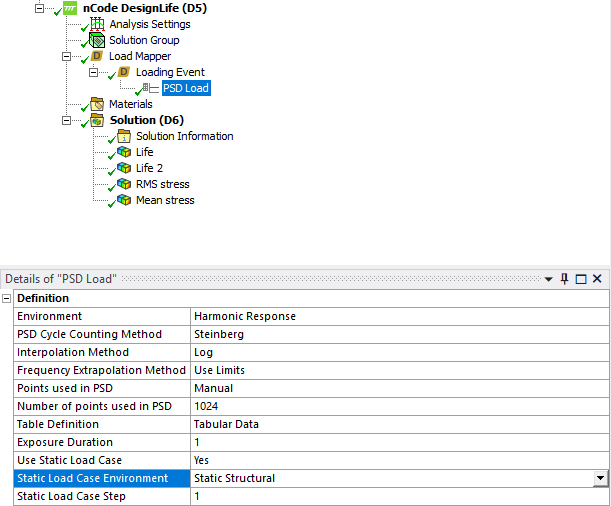Summary
In this blog, we will explore the importance of Ansys nCode in analyzing fatigue caused by random vibrations. We will learn how nCode helps in correcting mean stress and predicting the lifespan and durability of structures subjected to random vibrations.
What is fatigue life and understanding the impact of mean stress on fatigue life
Fatigue life refers to the number of cycles a structure can withstand before it fails under repeated loading. It is an important consideration in engineering design, especially for structures subjected to random vibrations.
Fatigue damage, on the other hand, is the accumulation of microscopic cracks and deformations in a structure caused by cyclic loading. These small damages can gradually grow and lead to catastrophic failure if not properly addressed.
Understanding fatigue life and fatigue damage is essential for predicting the lifespan and durability of structures. Ansys nCode provides tools and methodologies to accurately assess and predict these factors, enabling engineers to optimize their designs and ensure long-term structural integrity.
Mean stress refers to the average stress experienced by a structure during cyclic loading. It plays a significant role in fatigue life, as it can significantly influence the growth and propagation of fatigue cracks. Fatigue damage is primarily controlled by the alternating stress range, but the mean stress during the stress cycle can also affect fatigue damage.
High tensile mean stress levels can accelerate fatigue damage and reduce the overall lifespan of a structure. On the other hand, mean stress corrections can help include the negative effects of mean stress, improving the fidelity of the result.
Ansys nCode offers advanced mean stress correction techniques that allow engineers to account for the impact of mean stress on fatigue life.
Ansys nCode DesignLife And Random Vibration Fatigue Analysis
 Figure 1: Project Schematic
Figure 1: Project Schematic
To enable Ansys nCode DesignLife and utilize its mean stress correction methods for random vibration fatigue analysis, we will proceed with the following steps outlined below. Additionally, the project schematic can be referenced in Figure 1.
- Firstly, a static structural analysis is set up where the mean stress is applied. This allows us to account for the influence of mean stress on the fatigue life.
- Next, a prestress modal analysis is performed to account for stiffness changes in the structures and enable the use of the mode superposition method for our linear dynamic analysis.
- To obtain the frequency response function (FRF) from complex stresses, an Harmonic analysis is solved with a unit excitation across the frequency range of interest.
- It is important to ensure that the loading is consistent with the PSD spectra. In our case, the PSD spectra is measured in G^2/Hz, and the harmonic loading is set to 1g.
- Lastly, the nCode DesignLife software is set up, which utilizes the .rst files from the harmonic analysis and maps the PSD load to the system to calculate the random vibration result and fatigue result.

Figure 2: Analysis Settings Of DesignLife
The first step in setting up the analysis is to determine the mean stress correction method as shown at Figure 2 There are two main methods for including the mean stress effect:
1. Using distinct S-N curves from test data that were developed using different mean stress levels. If the actual mean stress falls between these curves, the results are interpolated. it is based on R-Ratio or mean stress level
2. Adjusting the alternating stress range using a mean stress correction theory. The most widely used theories for SN fatigue are Goodman and Gerber. It is important for the S-N test data to contain a curve developed with no mean stress (R = -1).

Figure 3: Including the Static Structural Analysis Result As Mean Stress
Another crucial step to include in our nCode DesignLife analysis is setting up the Static Load Case Environment option. By choosing the static environment, we can consider its results as mean stress for fatigue calculation, as shown in Figure 3 so the mean stress extracted from the static offset load case is used to shift the mean of all cycles in the predicted rainflow count.
You can gain valuable insights by watching the instructional video below, which will guide you through the process of utilizing Ansys nCode DesignLife to analyse the effects of mean stress on a structure under random vibration load.
Tags:
Random Vibration, PSD, Fatigue Analysis, nCode, DesignLife, mean stress correction, Ansys nCodeMar 7, 2024 5:10:21 AM
